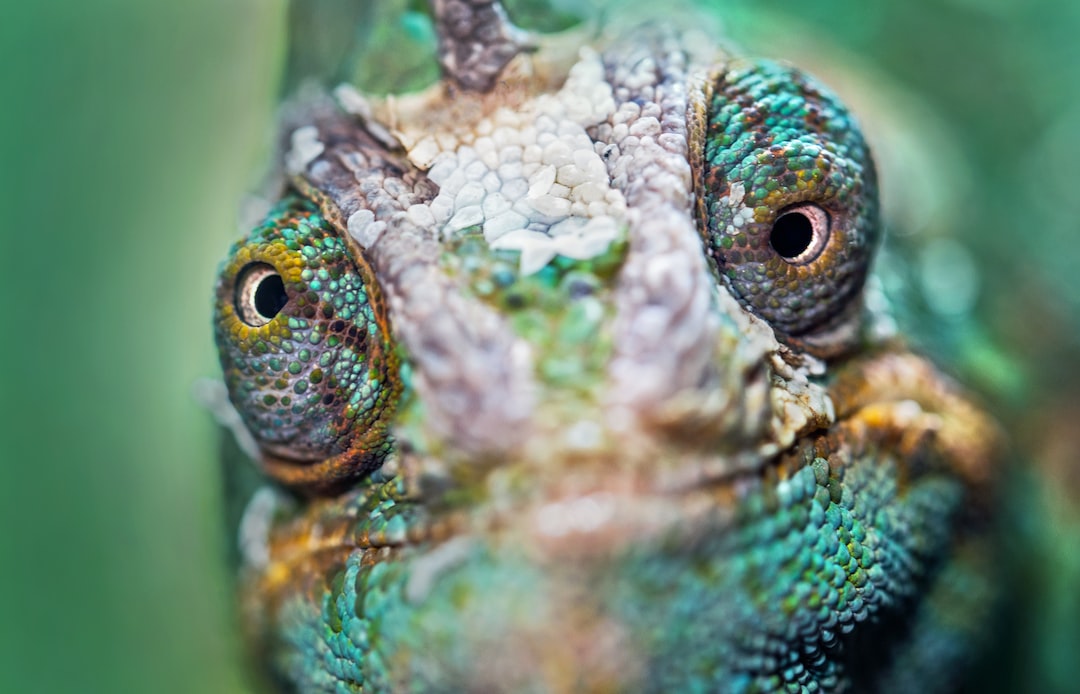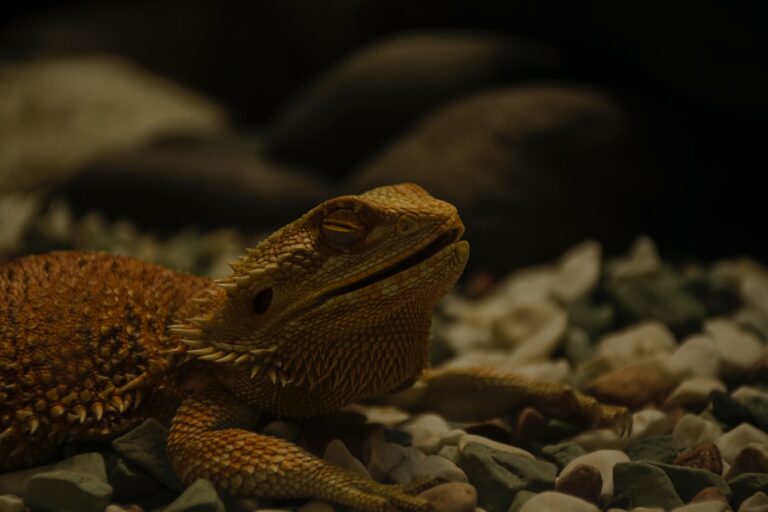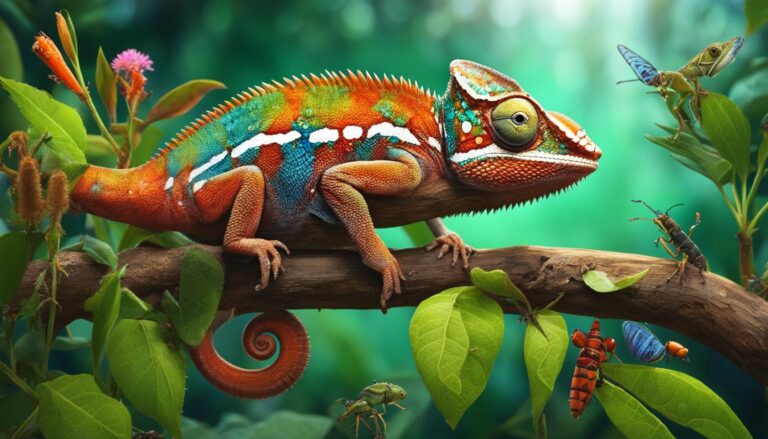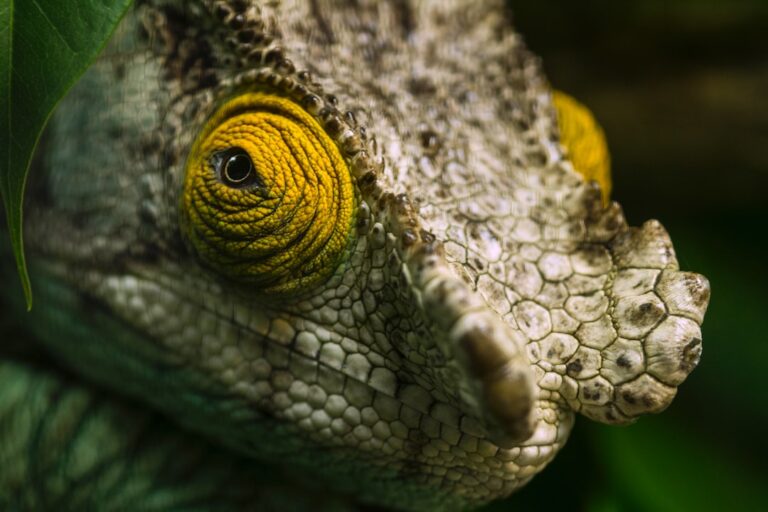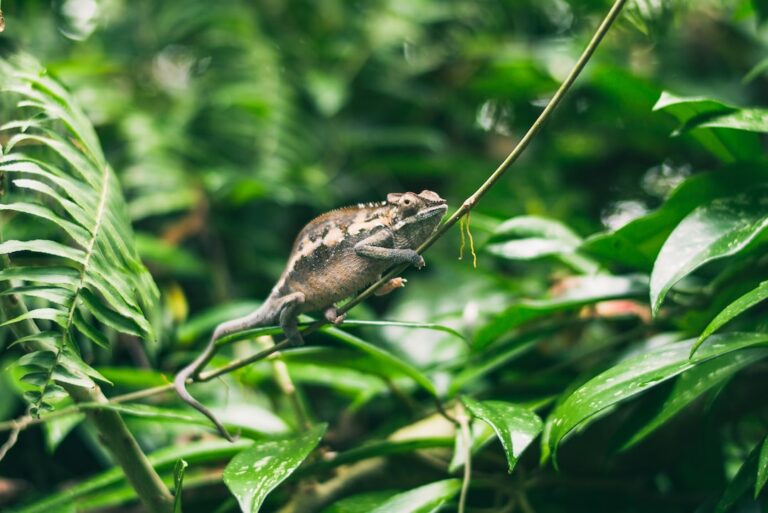Why Do Chameleons Close Their Eyes?
Chameleons are fascinating creatures known for their ability to change color and blend into their surroundings. They are reptiles that belong to the family Chamaeleonidae and are native to Africa, Madagascar, and parts of southern Europe and Asia. Chameleons have unique physical characteristics, including their long tongues, prehensile tails, and most notably, their eyes. Their eyes are one of their most important features, allowing them to hunt, navigate their environment, and communicate with other chameleons.
Table of Contents
The Importance of Eye Movement in Chameleons
Eye movement is crucial for chameleons to survive in the wild. Chameleons have the ability to move their eyes independently of each other, allowing them to have a 360-degree field of vision. This allows them to scan their surroundings for potential prey or predators. Their eyes can move independently in any direction, including up, down, and side to side. This gives them a distinct advantage when hunting, as they can focus on one target while keeping an eye out for any potential threats.
Chameleons also use their eyes to navigate their environment. They have excellent depth perception and can accurately judge distances between objects. This is especially important when they are moving through trees and branches, as they need to be able to accurately judge the distance between each branch in order to move safely. Their eyes also play a role in their ability to climb and grip onto surfaces. Chameleons have specialized toe pads that allow them to cling onto branches and surfaces, and their eyes help them accurately judge where to place their feet.
Chameleons and Their Unique Eye Structures
Chameleon eyes are unique among reptiles. They have large, bulging eyes that are positioned on either side of their head. This gives them a wide field of vision and allows them to see in almost all directions. Each eye is capable of moving independently of the other, allowing them to focus on different objects simultaneously. This gives them a distinct advantage when hunting, as they can keep one eye on their prey while scanning for any potential threats.
Chameleon eyes also have a specialized structure called a “cone” that allows them to see in both color and black and white. This is important for their ability to change color and blend into their surroundings. The cones in their eyes contain pigments that can absorb and reflect different wavelengths of light, allowing them to change color based on their environment. This is not only important for camouflage but also for communication with other chameleons. Chameleons can change the color of their eyes to signal aggression or submission to other members of their species.
The Role of Blinking in Chameleon Eye Function
Blinking is an important aspect of eye health for all animals, including chameleons. However, chameleons have a unique way of blinking compared to other animals. Instead of closing both eyelids simultaneously, chameleons blink one eye at a time. This allows them to maintain constant visual contact with their surroundings while still protecting their eyes.
Blinking helps chameleons maintain eye health by keeping their eyes moist and free from debris. Chameleons live in dry environments, and blinking helps prevent their eyes from drying out. It also helps remove any dust or dirt that may have accumulated on the surface of their eyes. Additionally, blinking helps distribute tears across the surface of the eye, which provides lubrication and nourishment to the cornea.
Chameleons and Their Natural Defense Mechanisms
Chameleons have several natural defense mechanisms, and their eyes play a crucial role in these mechanisms. One of the most well-known defense mechanisms of chameleons is their ability to change color. They can change the color of their skin and eyes to blend into their surroundings, making them almost invisible to predators. This is achieved through the movement of pigments in their skin and eyes, which allows them to match the colors and patterns of their environment.
Chameleons can also use their eyes as a form of intimidation. When threatened or agitated, they can inflate their eyes and display bright, contrasting colors. This is a warning sign to potential predators or rivals that they are ready to defend themselves. The ability to change the color of their eyes adds an extra level of intimidation, as it can make them appear larger and more threatening.
The Relationship Between Eye Closure and Stress in Chameleons
Chameleons have a unique behavior when it comes to eye closure. When they are stressed or feeling threatened, they will often close their eyes partially or completely. This behavior is believed to be a way for chameleons to protect their eyes from potential harm. By closing their eyes, they can shield them from any potential threats or dangers in their environment.
Eye closure in chameleons can also indicate their emotional state. When a chameleon is feeling calm and relaxed, its eyes will be open and alert. However, when it is stressed or anxious, it may close its eyes partially or completely. This behavior is often accompanied by other signs of stress, such as color changes, puffing up its body, or hissing. It is important for chameleon owners to be aware of these signs and provide a calm and stress-free environment for their pets.
Chameleons and Their Sleeping Habits
Chameleons have unique sleeping habits that are influenced by their eye behavior. Unlike humans and many other animals, chameleons do not have eyelids that close fully over their eyes when they sleep. Instead, they enter a state called “sleep mode,” where their eyes remain partially open. This allows them to stay alert and aware of their surroundings even while they are sleeping.
During sleep mode, chameleons will often change their color to a duller shade, which helps them blend into their surroundings and avoid attracting attention from predators. They will also position themselves in a way that allows them to grip onto branches or surfaces securely, ensuring that they do not fall while they are sleeping. This unique sleeping behavior is an adaptation to their arboreal lifestyle and the need to be constantly vigilant for potential threats.
The Impact of Environmental Factors on Chameleon Eye Behavior
Environmental factors such as temperature and humidity can have a significant impact on chameleon eye behavior. Chameleons are ectothermic animals, which means that their body temperature is regulated by their environment. If the temperature is too low, chameleons may become sluggish and have difficulty moving their eyes. On the other hand, if the temperature is too high, their eyes may become dry and irritated.
Humidity is also important for chameleon eye health. Chameleons require a certain level of humidity to keep their eyes moist and prevent them from drying out. If the humidity is too low, chameleons may experience dry eyes, which can lead to discomfort and potential eye health issues. It is important for chameleon owners to provide a suitable environment with the right temperature and humidity levels to ensure the well-being of their pets.
Chameleons and Their Eye Health
Chameleons are prone to several eye health issues that can affect their vision and overall well-being. One common issue is dry eyes, which can occur if the humidity in their environment is too low or if they are not blinking enough. Dry eyes can cause discomfort, redness, and irritation, and can potentially lead to more serious complications if left untreated.
Another common eye health issue in chameleons is eye infections. Bacterial or fungal infections can occur if the eyes are not kept clean or if there is an underlying health issue. Symptoms of eye infections in chameleons include redness, swelling, discharge, and difficulty opening or closing the eyes. If a chameleon is showing signs of an eye infection, it is important to seek veterinary care as soon as possible to prevent further complications.
Regular eye care is essential for maintaining good eye health in chameleons. This includes providing a suitable environment with the right temperature and humidity levels, ensuring that the eyes are kept clean and free from debris, and monitoring for any signs of eye health issues. It is also important to provide a balanced diet that includes foods rich in vitamin A, as this vitamin is crucial for maintaining healthy eyes in chameleons.
Understanding Chameleon Eye Behavior and the Importance of Eye Closure
In conclusion, chameleon eye behavior is fascinating and plays a crucial role in their survival and well-being. Their unique eye structures and ability to move their eyes independently allow them to hunt, navigate their environment, and communicate with other chameleons. Blinking helps chameleons maintain eye health by keeping their eyes moist and free from debris.
Chameleons use their eyes as a defense mechanism by changing the color of their skin and eyes to blend into their surroundings. Eye closure in chameleons can indicate stress or anxiety and is an important behavior to be aware of as a chameleon owner. Chameleons have unique sleeping habits that are influenced by their eye behavior, and environmental factors such as temperature and humidity can impact their eye health.
Understanding chameleon eye behavior is essential for providing proper care and ensuring the well-being of these fascinating creatures. By providing a suitable environment, monitoring for any signs of eye health issues, and seeking veterinary care when necessary, chameleon owners can help maintain good eye health in their pets.
If you’re curious about why chameleons close their eyes, you might also be interested in learning about why do iguanas blink. Blinking is a common behavior among reptiles, and it serves various purposes. To find out more about this fascinating topic, check out this informative article on Reptile Friend: Why Do Iguanas Blink?

